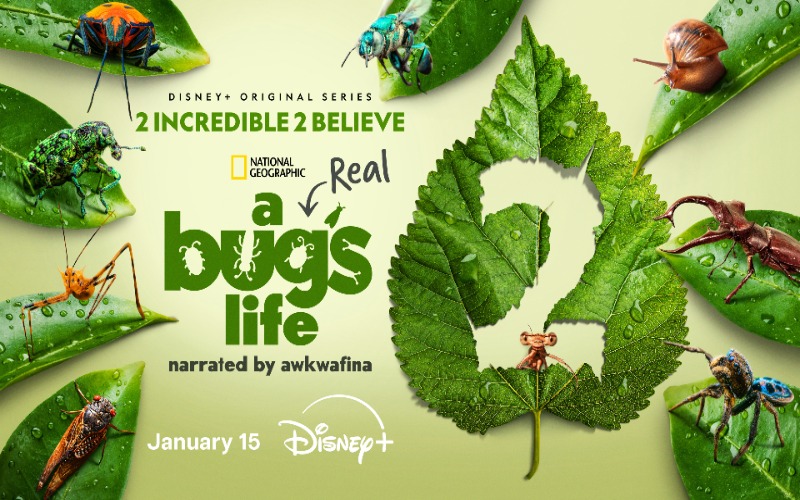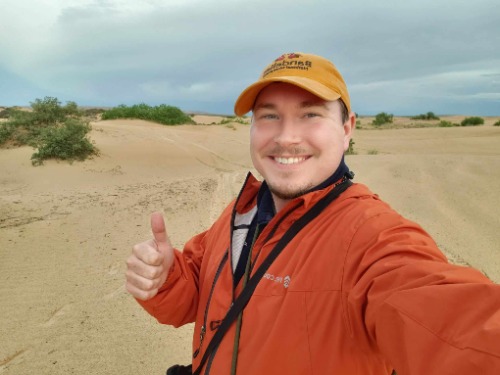
The second season of A Real Bug’s Life is here, and it’s bigger and bolder than ever! Inspired by Disney and Pixar’s A Real Bug’s Life, this thrilling Disney+ Original series from National Geographic takes us deeper into the extraordinary, micro-sized world of bugs. In this world, nature’s forces play out on a completely different scale, and tiny creatures rely on remarkable superpowers to navigate their daily lives.
We spoke with Entomologist Michael Carr, who played a key role in filming the “Love In The Forest” episode, to discuss his involvement in the show, the evolution of tech in the field of entomology, and the deeper insights he hopes viewers will gain from this remarkable series.
Innovation & Tech Today: How did you become involved in A Real Bug’s Life 2, and what has your role been in the production of the series?
Michael Carr: I was approached by the crew as they were planning their trip to Tennessee to shoot the firefly and stag beetle episodes, or at least the highlights. This was part of the episode focusing on Appalachia and the Smoky Mountains. It was a bit of a surprise when they reached out to me.
I had been working on research on stag beetles for a bit. I’d been reaching out to a lot of U.S.-based researchers who had at least some peripheral interaction with stag beetle research over the last several years. I think it was my incessant pestering of all the people who had anything to do with stag beetles.
I had at least known enough of these contacts and they pointed the crew in my direction. So, I was in a lucky place where I could say, “Yes, I’ll absolutely come to Tennessee and help you all find and film stag beetles.”
It went through and it was a lot of me handling trying to find stag beetles and holding on to them. I did probably a month and a half out in Tennessee on a property with my blacklight set up just trying to lure whatever interesting critters I could up for the project.
I&T Today: What makes Tennessee such a unique and valuable location for this series? What did it offer that no other place could?
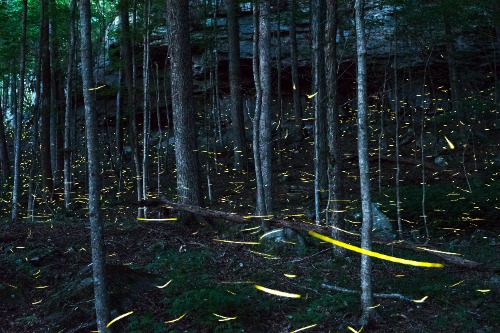
Carr: Lynn Faust was the firefly expert consulted and utilized for the filming of the series. This location was selected because Lynn knows the best spots for fireflies in Tennessee. These are around Pigeon Forge, the Great Smoky Mountains, and even on her family property, where we filmed some of the episodes.
I had spent quite a bit of time around fireflies growing up in rural Virginia, but this was a completely different experience. It was a flood of life, with so many different species of fireflies—species I didn’t even know existed. It was a great learning experience for me, especially walking around with Lynn as she pointed out a dozen different species. She identified them based on their flashing frequency, their flight patterns while flashing, and whether they were on the ground or in the treetops.
Tennessee has an incredible diversity of fireflies, insects, and invertebrate life in general. It’s a huge biodiversity hotspot for both invertebrates and salamanders. The area is truly its own entity, with remarkable beauty and diversity. I think Tennessee was the perfect location to capture just how incredible the Eastern United States can be when it comes to biodiversity.
I&T Today: How did the cameras help present bugs in a new way? How do you think it will offer viewers a new perspective on insects?
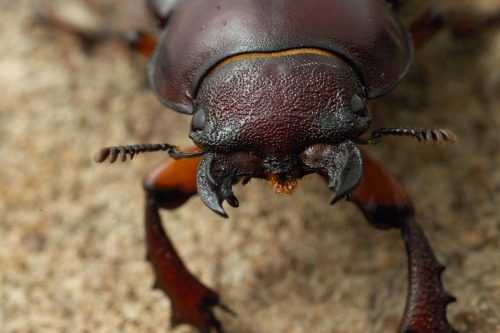
Carr: I spend a lot of time looking closely at bugs. If you were to go hiking with me, I’d stop about every four steps and get way too close to a leaf to look at something small that most people wouldn’t even notice. But as we were shooting the show, especially some of the stag beetle scenes, I helped capture the finer details. For example, seeing the nuances of a giant stag beetle up close on the camera screen was a completely different experience. You could really observe the subtle movements of its antennae and the reflections in its eyes as it moved slightly.
For viewers, having that kind of close-up view is definitely something new. Most people, especially those who don’t work with insects, probably haven’t looked that closely at insect faces. I’m excited for people to have the chance to see things they wouldn’t normally notice in everyday life—and to realize that the smaller something is, the more complex and intricate it becomes. I’m really looking forward to seeing how viewers build on the enjoyment they seemed to experience in season one, and I think they’ll find even more to appreciate in season two.
I&T Today: Were there any innovative tools you used to attract or find the bugs in Tennessee for the cameras?
Carr: It really depends on the insect you’re trying to find. Fireflies are mostly hand-collected. They only appear for a very brief period in the evening, right around dusk, before it gets completely dark.
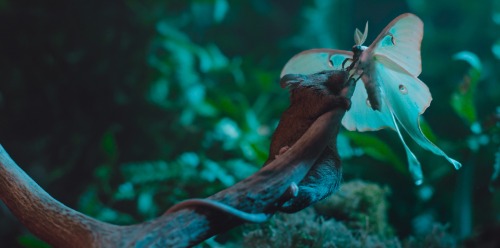
For stag beetles, it can depend on luck, but I used UV blacklight lamps set up on tripods, with a sheet placed in the field to project the light. The UV light, depending on its frequency, would attract them. I used fairly large mercury vapor lamps to draw them in, as beetles are generally attracted to light at night. Blacklights are great for attracting beetles, including Hercules beetles, moths, and other insects. Fireflies, on the other hand, require being in the right place at the right time to collect them by hand.
As for the shots, especially the ones I worked on, to get the bugs to move in a certain way or react, we’d sometimes use tools like a pipe cleaner, paintbrush, or wire. For example, I might blow gently on an insect’s head to get it to raise its body, or use a paintbrush on the back of its elytra to trigger a response, like the beetle extending its fangs in a display of aggression, thinking another male was nearby. It may seem mundane, but when you’re gently brushing an insect or nudging it, it’s similar to how someone might react if you brushed the back of their head—they’d turn around, a little confused.
I&T Today: How do you think technology has evolved over the course of your career as an entomologist? Have there been any new gadgets or devices you now use regularly in your fieldwork?
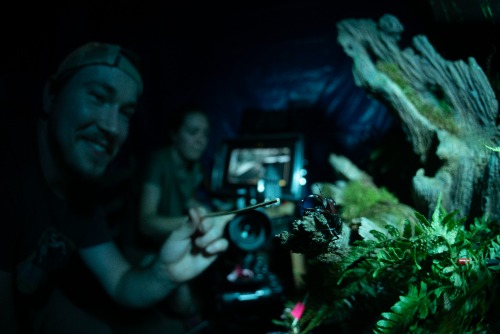
Carr: Things are definitely changing. The biggest innovation for me has been the advancement of LED lighting, especially when I’m using black lights. Mercury vapor lamps are an older technology, often used in warehouses or streetlights in the past. These lamps emitted a specific frequency of light that attracted insects, which is why they were so effective.
With LEDs, however, you can replicate that same broad frequency of light in a much cheaper, more reliable, and safer way. Personally, that’s been the best advancement I’ve seen in my work. Mercury vapor lamps, if they get water on them while hot, can explode. With LEDs, I can leave them out all night without any issues at all.
I also think cameras have been a huge leap forward. Whether it’s advancements in macro photography or simply using cameras to focus on things we weren’t originally looking at, the technology has made a big difference. The cameras I had the chance to work with on set were incredible. They allowed us to capture minute details that might have otherwise been overlooked.
I&T Today: What do you hope viewers take away or remember about insects after watching season two of A Real Bug’s Life?
Carr: I think the biggest takeaway is that life, in all its forms, faces the same struggles we do. There’s a certain relatability in the insects shown in this series. What might have initially been viewed as just “pests” or something to be sprayed with pesticides, hopefully becomes something more understandable. You see that an insect’s life isn’t just about being a nuisance to us; there’s purpose, function, and a process that they go through, contributing to a larger web of life.
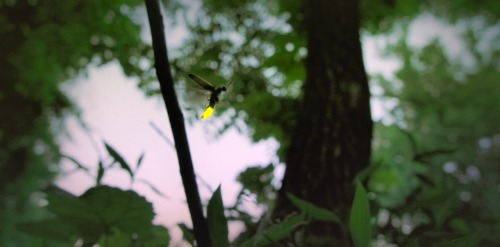
Whether it’s eating pests or simply existing in these incredible ecosystems, going through their own reproduction and proliferation, I hope people gain an appreciation for the diversity and function of life. Not all insects are bad; they’re just another form of life coexisting with us.
I&T Today: What advice would you give to young adults or kids who want to learn more about science?
Carr: I think interest comes from experience. My advice would be to get outside and take a closer look at anything that piques your curiosity. If it’s plants, examine a leaf more closely and pay attention to its structure and how it grows. If it’s animals, watch how they behave and move. At its core, science is about trying to understand the world around us.
The more you explore and pay attention, the more fascinating it becomes, and the more motivated you’ll be to learn. There’s always something new to discover, so find what excites you, develop a passion for it, and run with it.
Five new episodes of A Real Bug’s Life will be available to stream on Disney+ starting January 15. All episodes of the first season are now streaming!



